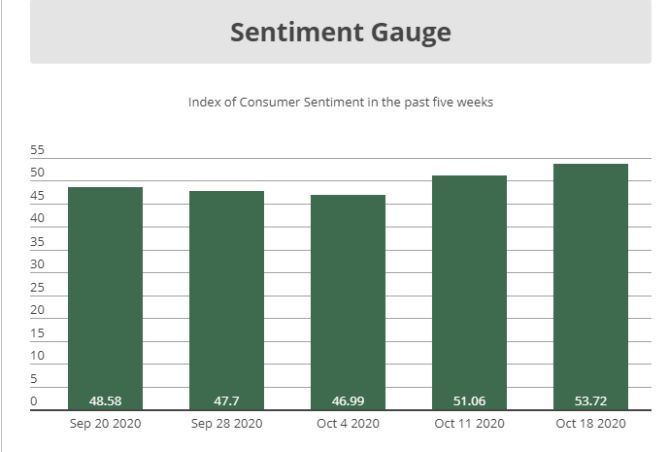Keeping the employment rate from slipping is challenging.
To merely keep the employment rate unchanged, the economy has to generate additional jobs.
It needs to run to stay where it is, points out Mahesh Vyas..

Labour market statistics derived from CMIE's Consumer Pyramids Household Survey have been indicating a stagnation of India's economic recovery process from its April 2020 shock.
The recovery was smart in May and spectacular in June.
It continued well into July.
Then, it stalled in August and September.
Now, it appears that the stagnation could extend or worsen in October.
We measure labour market conditions by the most apt summary measure for a developing country like India -- the employment rate.
This is the proportion of working age population that is employed.
Fiscal 2019-2020 ended with an employment rate of 39.4 per cent.
It fell to 27.2 per cent in April 2020 but, it recovered 300 basis points to reach 30.2 per cent in May.
In June, the recovery was of a very impressive 600 basis points to 36.2 per cent.
In July, the employment rate climbed up another 140 basis points to 37.6 per cent.
The fatigue set in in August when the rate fell to 37.5 per cent. Then, there was a small recovery to 38 per cent in September.
Note that the fatigue set in well before recovering to the 2019-20 average employment rate.
October shows signs of continued stress.
All the first three weeks ending in the month pencilled employment rates lower than the 38 per cent recorded in September.
The rates, in sequence, were 37.6 per cent, 37.5 per cent and 37.9 per cent.
Keeping the employment rate from slipping is challenging.
To merely keep the employment rate unchanged, the economy has to generate additional jobs.
It needs to run to stay where it is.
This is because the denominator -- the working age population -- keeps rising naturally.
Employment has to rise in tandem to ensure that the ratio, the employment rate, remains constant.
In the past four years, the employment rate has fallen steadily in each year. This is because employment has been stagnant.
Fall of the employment rate revealed in the first three weeks of October 2020 is entirely because of a fall in the employment rate in rural India.
The employment rate in rural India was 39.8 per cent in September.
This was its highest level since the lockdown and was not too far from the 40.7 per cent clocked in 2019-2020.
However, it appears that rural India is not able to sustain an employment rate of 40 per cent or more.
The weekly employment rate had touched 39.9 per cent in the week ended September 6.
But it has slid since then.
In the week ended October 4, the rate was down to 39 per cent and then it slipped further to 38.8 per cent in the week ended October 11.
It recovered to 39.5 per cent in the week ended October 18.
But, it was still lower than the September average. The average of the first three weeks of October was 39.1 per cent.
The fall in the rural employment rate in October is somewhat surprising because this is the peak season for harvesting the kharif crop.
While sowing is spread over four months, most of the crop is harvested in October.
Different crops have different gestation periods but save for cotton and sugarcane, most of the kharif crop is harvested in October.
It is possible that employment under the MGNREGS has declined significantly in October.
Till October 19 this year, the scheme had provided 58.5 million person-days of employment compared to 138 million person-days of employment provided during the entire month of October 2019.
These numbers do get revised very substantially and therefore, it may be hazardous to draw inferences at this stage.
Yet, the fall evident so far is quite large.
The average person-days of employment per day in October 2019 was 4.47 million. In the first 19 days of October 2020 it was 3.08 million, a fall of 31 per cent.
Given that rural India has a much larger weight in all-India estimates, it is imperative that its employment rate stops falling any further.
In contrast to the falling trend seen in rural India, urban India has shown an improvement in the employment rate in October 2020.
The employment rate in urban India in September was 34.4 per cent.
The recovering trend in urban India in October is in contrast to the sharp fall in employment rate seen in September.
The urban employment rate at 34.4 per cent was a substantial 254 basis points lower than the average 36.9 per cent rate in 2019-20.
The average employment rate in urban India in the first three weeks of October was 34.8 per cent.
Even this was over 200 basis points lower than the 2019-2020 level.
The falling employment rate in rural India and the continued low employment rate in urban India are the weaknesses in India's labour market recovery process.
The gap between the monthly employment rate in 2020-21 and the corresponding month of 2019-20 narrowed consistently till August 2020 when it was just 182 basis points.
It then rose to 254 basis points in September.
The gap could widen further in October.




Mahesh Vyas is MD and CEO, CMIE P Ltd.
Feature Presentation: Aslam Hunani/Rediff.com











